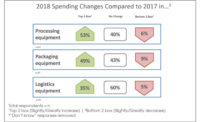One of America’s most beloved authors of children’s books, Theodor Seuss Geisel — otherwise known as Dr. Seuss — came up with his classic tome, Cat in the Hat, because of a challenge. It all started when Life magazine published an article on illiteracy among children in America in May 1954. The article concluded that children weren’t reading because their books were boring.
William Ellsworth Spaulding, who was then the director of the education division at Houghton Mifflin, decided to try to rectify the situation, at least the part about publishing boring books. He compiled a list of 348 words that Spaulding believed all first graders should know. That’s when he turned to the “Doctor” and asked him to trim the list back to 250 and “bring back a book children can’t put down,” says Wikipedia. Nine months later, Geisel completed The Cat in the Hat, using 236 of the words given to him.
Charles Mingus, of course, wasn’t the simplest of composers, band leaders or bass players. His temperament and personal history fueled a genius for jazz improvisation and fusion that none have matched to this day. But he got it right on creativity. Simple, truly simple, is sublime.
But as confectioners embrace “clean” labeling, reverting back to formulations with ingredients that all of us can understand, the process — more often than not — isn’t so simple. Moreover, producing these treats at an affordable price point often necessitates a good deal of creativity, whether it comes to investing in either automation, expansion or ingredient sourcing.
As our Cat in the Hat character points out, “Oh, the thinks you can think up if only you try.”
And confectioners are thinking hard. Moreover, they’re spending money while doing so. Those are the findings from Candy Industry’s Confectionery Equipment & Ingredient Survey. During the next three years, more than three-quarters of those polled indicated that they would purchase chocolate and confectionery processing equipment, ancillary and/or processing equipment.
It’s all about capability and flexibility. Nearly all companies have developed a new product in the past 12 months, with nearly two-thirds of those polled (63 percent) having launched five or fewer items. About a third will roll out at least 6 and more new product items. The actual mean for all surveyed: 10 new products.
When diving deeper into equipment purchase plans, nearly half indicated they were going to acquire logistics equipment while more than one quarter of the companies queried have set aside budgets for cocoa processing equipment. Forty-three percent said they would purchase melting and tempering machines in the chocolate and confectionery process equipment category while four of ten focused on coating and enrobing machines. One-third checked conveyors and coolers.
When it comes to just processing equipment, more than half said they were looking at mixers (54 percent) while more than four out of 10 (43 percent) chose cutters. On the non-chocolate processing equipment side, one-third said they would purchase kettles while 22 percent said conveyors and cooling equipment as well as cookers were on their list.
Of those intent on acquiring cocoa processing equipment (29 percent), 14 percent are considering refiners, 13 percent cocoa presses and 8 percent conches.
Ancillary equipment also plays a large role in future buying plans. Forty-four percent said they had scales and check weighers on their mind, while 41 percent indicated they needed moulds.
Packaging automation, of course, continues to interest confectionery manufacturers, with nearly 63 percent and 57 percent reporting they would purchase primary and secondary packaging equipment, respectively.
Form/fill/seal machines drew 30 percent of the survey respondents while flow-wrappers accounted for 27 percent. Cut-and-wrap machines and twist wrappers drew 22 and 21 percent, respectively.
When it comes to secondary packaging, shrink wrappers top the list with 41 percent, followed by labelers (32 percent). On the packaging materials side, as expected, boxes, bags and films comprised the top three; 75, 67 and 56 percent, respectively.
Despite all the focus on processing and packaging equipment, 46 percent indicated there remains an interest in logistics purchases, particularly with software (29 percent) and cloud-based investments (21 percent) constituting the largest share.
So how do these purchasing trends compare with last year? Well, according to the survey, half of all respondents (51 percent) indicated they were increasing their spending on packaging equipment and more than one half (52 percent) indicted the same for processing equipment. Even logistical investments were projected to grow by 21 percent.
Equipment investments in 2016 represented 28 percent of the respondents’ capital expenditure budgets. Within that group, more than half (57 percent) reported they would increase their equipment spending in 2017. The mean expected expenditure in 2017 totaled $622,773.
As for what kinds of attributes confectionery manufacturers were looking for in making equipment purchases, no surprises here. Cost savings/efficiency ranked highest with 87 percent; the equipment manufacturer’s or distributor’s reputation a not-so-distant second with 79 percent. Availability, always a consideration, ranked third at 71 percent.
One of the factors driving this surge in equipment buying stems from manufacturers expanding their production capacity or capability. More than one-third (37 percent) announced they were adding a new production line within the next 12 months. And one-third reported that they were adding square footage to accommodate increased production capacity.
On the ingredient side, more than half (58 percent) of those surveyed said either 1 or 2 people are involved in making purchases, compared to less than half (49 percent) in equipment purchases. However, when one calculates the mean for ingredients versus equipment, turns out that there are many more reviewing the ingredient process (16.1) than on the equipment side (8.2).
Availability, not a shocker to say the least, was rated as the attribute most important to buyers (84 percent), followed by use in current products (74 percent) and then cost savings/efficiency (73 percent).
As to where they gather information about ingredients, trade shows — despite the costs involved — still rate first (68 percent) as a source. Interestingly, trade magazines (such as Candy Industry) ranked second at 66 percent, followed by supplier sale representatives (61 percent).
New product development also plays a critical role in the purchase of ingredients these days, as revealed by the survey. As mentioned earlier, nearly all companies have developed a new product in the past 12 months, with nearly two-thirds of those polled (63 percent) having launched five items or fewer. A good number look to roll out more — 33 percent will roll out at least 6 or more new products. The actual mean for all surveyed: 10 products.
Expect more next year. Results show that the mean will jump to 11 new confectionery items in 2018.
Given those results, two-thirds of those responding indicated that their ingredient spending would increase in 2017. And those same companies indicated that, on average, 39 percent of their capital budget expenditures involved ingredient purchases last year.
As expected, almost three-quarters (81 percent) of those purchases involved ingredients for existing products. At the same time, nearly two-thirds (65 percent) acknowledged that they were purchasing new ingredients for use in new products.
More than four out of 10 (42 percent) said the ingredients purchased were being used to replace an existing ingredient while almost one-third (32 percent) reported that the ingredients were for use in new products.
When reviewing the types of ingredients purchased list, there weren’t many surprises. When scrutinizing the data a bit closer, a couple of eyebrow-raising stats emerged. First, almost the same percentage of companies purchase dark and milk chocolate (55 and 52 percent, respectively), an indicator of dark chocolate’s continued and growing popularity.
Upon magnifying the results among the healthy/nutritional ingredient purchases, nuts and fruits ranked high, 73 and 56 percent respectively. Seeds and grains, however, are beginning to show up more and more in formulations, with seeds certainly in demand as their respective percentages — 45 and 29 percent — indicate.
And when it comes to colors, while artificial dyes and lakes still dominate (60 percent), natural and exempt colors are coming on strong (48 percent).
That same affinity for natural is seen in the types of flavor ingredients purchased, with vanilla (76 percent) and natural (58 percent) topping essential oils (45 percent), artificial (42 percent), chocolate (42 percent) and fruit/FTNF (24 percent).
On the fats and oils side, coconut and cocoa butter top the list, 55 and 53 percent, respectively. Among sweeteners, sugar still reigns, with 79 percent opting for the traditional favorite.
Additional ingredient survey observations worth noting:
- On average, 27 percent of respondents include nuts and inclusions in their operations.
- Nearly half (47 percent) expect to increase nuts and inclusions usage in the next 12 months.
- Nearly one-third (30 percent) of companies polled have operations dedicated to healthy and functional ingredients.
- More than half (56 percent) expect to increase better-for-you/or functional ingredient operations in the next 12 months.
Suppliers take note, 2018 looks to be another demanding year.
Methodology: BNP Media’s Market Research Division, in conjunction with Candy Industry Magazine, conducted an Ingredient and Equipment Trends Study in order to provide detailed information about purchasing decisions. Active, qualified Candy Industry Magazine subscribers were selected from the domestic (United States only) circulation with an e-mail address on file. The survey was conducted between March 15 – 19, 2017.
















